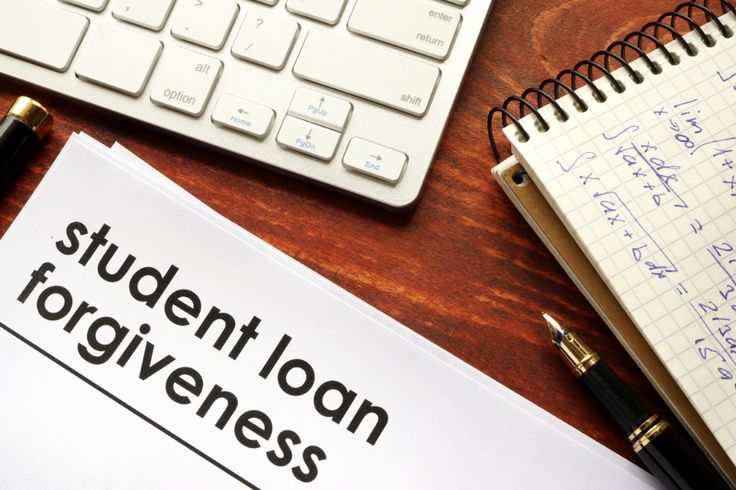Over the last few years, student loan forgiveness has become a significant financial solution for millions of Americans weighed down by education debt. With increasing tuition costs and an ever-changing job market, student loans can seem like a permanent burden. Yet, for many borrowers, there is hope.
This guide will take you through the basics of student loan forgiveness—how it works, who is eligible, and how to take decisive action toward financial independence. Whether you’re a graduate or someone who has been paying loans for decades, knowing your options is the foundation to a debt-free future.
What Is Student Loan Forgiveness?
Student loan forgiveness programs cancel some or all of a borrower’s federal student loan balance under specific circumstances. These programs are frequently attached to your line of work, income level, or regular payments over a set number of years. Forgiveness can take many different forms, from public service to income-driven repayment (IDR) plans.
It should be noted that most of the forgiveness options are only for federal student loans, not for private loans. Knowing the nature of the loan is critical before taking any forgiveness route.
Popular Student Loan Forgiveness Program Types
- Public Service Loan Forgiveness (PSLF)
The PSLF program is for individuals employed in qualifying government or nonprofit positions. If you have 120 qualifying monthly payments while you’re working full-time for a qualifying employer, the outstanding balance on your federal Direct Loans can be forgiven.
Some key professions are:
- Public school teachers
- First responders and law enforcement officers
- Employees of nonprofits
- Members of the military
- Teacher Loan Forgiveness
Teachers who work full-time in low-income schools for five consecutive years can qualify for forgiveness of up to $17,500. This is a different program from PSLF and is potentially easier to qualify for for early-career instructors.
- Income-Driven Repayment (IDR) Forgiveness
If you’re on an IDR plan—such as Income-Based Repayment (IBR) or Pay As You Earn (PAYE)—your outstanding loan balance could be canceled after 20–25 years of qualifying payments. These plans scale back your monthly payments based on your income and household size.
- Total and Permanent Disability Discharge
Borrowers who are permanently disabled and cannot work may be eligible to have their federal loans discharged. This must be documented, either through the VA, SSA, or licensed physician.
Recent Developments and Temporary Relief Provisions
The dialogue about student loan forgiveness has grown considerably in recent years. Emergency relief programs such as COVID-19 forbearance and the Biden administration’s continued attempts to provide targeted forgiveness have added new levels of complexity and possibility.
Currently, most borrowers are eligible for one-time modifications that bring them within reach of forgiveness, particularly those on IDR or PSLF paths. Keeping up on these changing regulations can save you money and time.
Who Qualifies for Student Loan Forgiveness?
While each program has unique eligibility criteria, here are a few general factors that increase your chances of qualifying:
- Employment in public service or nonprofit organizations
- Enrollment in an income-driven repayment plan
- A consistent record of on-time payments
- Possession of federal Direct Loans (some FFEL and Perkins loans may need to be consolidated first)
You may also benefit if you:
- Teach in underserved areas
- Serve in the military
- Experience long-term disability
Being proactive about checking your eligibility every year can keep you on course.
How to Apply for Student Loan Forgiveness
- Verify Your Loan Type
Begin by signing in to your account at studentaid.gov to check if your loans are eligible for forgiveness.
- Submit Employer Certification
If applying for PSLF, submit the Employer Certification Form every year to monitor progress toward the 120-payment requirement.
- Select the Appropriate Repayment Plan
Enroll in an IDR plan if you’re working toward forgiveness by income-driven repayment.
- Consolidate If Necessary
Certain loans, such as FFEL or Perkins, must be consolidated into a Direct Loan to be eligible for some programs.
- Stay Organized
Track payments, correspondence with your loan servicer, and submitted documentation.
Common Misconceptions About Forgiveness
Forgiveness Equals Free Education
Forgiveness is not given—rather, it’s earned. It usually takes years of on-time repayment or service.
All Loans Are Eligible
Only federal loans qualify. Private student loans are not eligible for government forgiveness programs.
Forgiveness Is Automatic
You have to specifically apply and qualify program-wise. Forgiveness is not automatic.
Frequently Asked Questions FAQs
Can private student loans be forgiven?
No. Forgiveness programs are only for federal student loans. Some private lenders, however, provide hardship alternatives such as deferment or adjusted repayment terms.
Is forgiven student loan debt taxable?
It depends. Until 2025, most federal loan forgiveness is tax-free under the American Rescue Plan Act. Check the latest tax regulations.
Do I have to make payments while waiting for forgiveness approval?
Yes, unless your loans are in deferment or forbearance. Paying them keeps you current and can accelerate the process.
What if I change jobs while on PSLF?
You must be working full-time for a qualifying employer. Switching to a non-qualifying job could interrupt your progress toward forgiveness.
Take Control of Your Student Debt Today
Student loan forgiveness isn’t a buzzword—it’s a lifeline for individuals who’ve invested in their education and now want financial stability. Whether you’re in public service, climbing the long-term ladder of an IDR plan, or simply looking at temporary relief programs, student loan forgiveness can lead to long-term debt freedom.
Here’s what you can do today:
- Log in to your federal student aid account and check your loan types.
- Look into enrolling in an IDR plan suitable for your income at the time.
- Verify if your employer is eligible under PSLF or other initiatives.
- Make a calendar reminder to review your eligibility annually.
Don’t wait for a perfect time—begin planning your forgiveness process today. Relief is nearer than you imagine.

